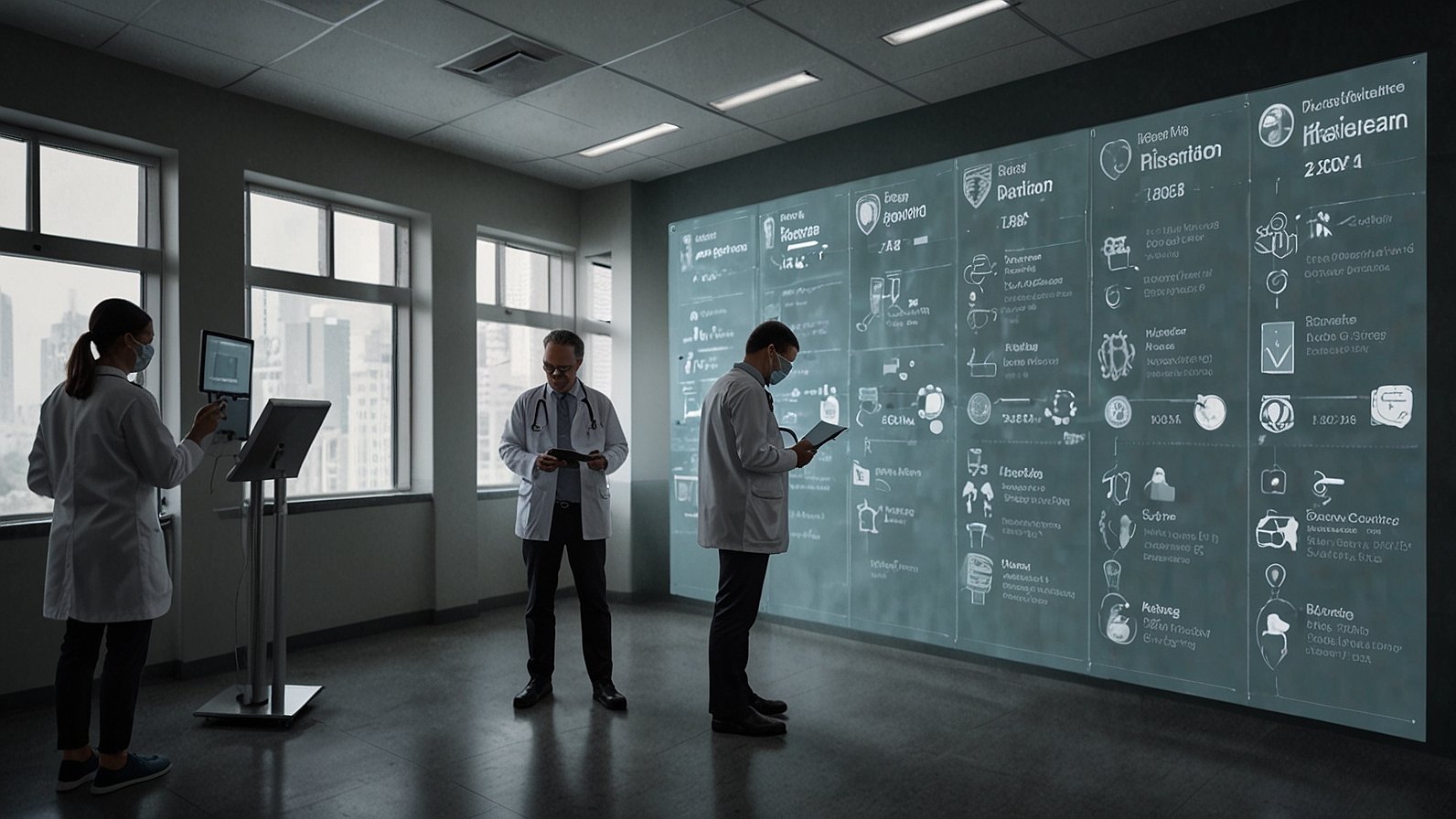Imagine it’s 10 PM, and your child spikes a fever. Your regular clinic is closed, and a trip to the ER feels like an overreaction. A decade ago, you’d be left worrying and waiting. Today, the answer is in your hand. The telehealth market is exploding, projected to reach over $450 billion by 2030. But what if the technology connecting you to a doctor could also be the very system that empowers that doctor’s practice? This is the core idea behind platforms like Doctiplus, which are fundamentally reshaping our healthcare experience by merging patient convenience with powerful practice management.
This article isn’t just about video calls with a doctor. We’ll explore how an integrated approach is creating a win-win for both patients and healthcare providers, making quality care more accessible and efficient for everyone.
What Exactly is Doctiplus? Beyond the Video Call
If you think of standard telemedicine apps as a simple telephone line—good for a single conversation—then think of Doctiplus as an entire digital clinic. It’s a comprehensive platform designed to do two things exceptionally well: connect patients with healthcare professionals on-demand, and provide those professionals with the tools they need to run their practices smoothly.
It’s the difference between using a ride-sharing app for a single trip and having a full-service travel agency manage your entire journey. One is a transaction; the other is a holistic solution. For patients, this means seamless access. For doctors, it means an all-in-one system that handles scheduling, patient records, billing, and more, all from a single dashboard.
The Patient’s Perspective: Healthcare on Your Terms
For anyone who has ever spent a lunch hour in a crowded waiting room, the benefits of a platform like this are immediate. It’s about putting control back into the hands of the patient.
Convenience That Fits Your Life
The most obvious advantage is accessibility. Whether you’re at home, at the office, or traveling, you can consult a qualified doctor without the commute or the wait. This is a game-changer for:
- Busy professionals who can’t afford to take half a day off for a minor ailment.
- Parents with sick children who need quick medical advice.
- Individuals with mobility issues or those living in remote areas with limited specialist access.
- Anyone seeking a quick second opinion without the hassle of another in-person appointment.
A Continuum of Care, Not Just a One-Off Call
A common concern with telemedicine is that it feels disconnected from your regular doctor. A robust platform addresses this. Your virtual visit isn’t an isolated event. The consultation notes, prescribed medications, and follow-up recommendations are digitally logged. With your permission, this information can become part of your ongoing health record, ensuring that every doctor you see within the network has the full context. It’s about creating a continuous thread of care, not a series of fragmented conversations.
The Doctor’s Dashboard: Streamlining the Business of Healthcare
While patients see a friendly app, healthcare providers using Doctiplus interact with a powerful command center. Running a medical practice involves a mountain of administrative tasks that have little to do with actual medicine. This is where an integrated platform truly shines.
Bidding Farewell to Administrative Chaos
Think of the front desk of a typical clinic: phones ringing, piles of paperwork, and a complex booking calendar. Now, imagine digitizing all of that. A practice-management system within Doctiplus can automate appointment scheduling, send SMS or email reminders to patients (drastically reducing no-shows), and manage billing and invoices electronically. This frees up staff to focus on more critical, patient-facing tasks and reduces the risk of human error.
Centralized Patient Records at a Glance
Instead of hunting through filing cabinets or multiple digital folders, a doctor can pull up a patient’s complete history instantly before a video consultation. This includes past consultation notes, prescribed medications, allergies, and lab results. This comprehensive view allows for more informed decision-making and a more personalized patient interaction, even in a virtual setting. It’s like having the patient’s entire file laid out perfectly before they even say “hello.”
How Does Doctiplus Stack Up? A Feature Comparison
Let’s break down how a unified platform compares to using a patchwork of separate tools.
The Integrated Platform vs. The Traditional Approach
| Feature | Traditional Model (Disconnected Tools) | Doctiplus (Integrated Platform) |
|---|---|---|
| Patient Scheduling | Phone calls, paper calendars, or a separate booking app. | Integrated online booking that syncs with the doctor’s calendar in real-time. |
| Medical Records | Physical files or isolated digital documents. | Secure, cloud-based Electronic Health Records (EHR) accessible from anywhere. |
| Video Consultations | A third-party app like Zoom or Skype, not designed for healthcare. | A secure, HIPAA-compliant video tool built directly into the platform. |
| Payment & Billing | Manual invoicing, insurance claim paperwork. | Automated billing, payment processing, and easier insurance integration. |
| Patient Communication | Personal phones, emails—a privacy risk. | Secure, in-app messaging that keeps all communication logged and confidential. |
As you can see, the integrated approach eliminates the need to juggle multiple logins and ensures data flows seamlessly from one function to the next.
Debunking Common Myths About Integrated Telehealth
With any new technology, misconceptions arise. Let’s clear up a few.
- Myth 1: “The quality of care is lower.” For many non-emergency situations, such as follow-ups, prescription refills, dermatological issues, or mental health therapy, virtual care can be just as effective as in-person visits. The key is using a platform that allows for high-quality video and easy sharing of photos or documents.
- Myth 2: “It’s impersonal and cold.” Ironically, many patients and doctors find that virtual consultations can feel more personal. Without the formal setting of an examination room, conversations can become more conversational. Doctors can see into a patient’s home environment, which can sometimes provide valuable context.
- Myth 3: “The technology is too complicated.” Platforms designed with user experience in mind, like Doctiplus, are built for simplicity. For patients, it’s often as easy as clicking a link. For doctors, a well-designed dashboard consolidates complexity into an intuitive interface, reducing the technological burden, not increasing it.
Security and Privacy: Your Data in a Digital Vault
Whenever health data is involved, security is paramount. A legitimate platform treats data protection not as an afterthought, but as its foundation.
Think of it like this: sending a health message through a regular email is like sending a postcard—anyone handling it can read it. Sending it through a secure telemedicine platform is like sending a letter in a titanium briefcase, handcuffed to a courier, with a unique combination lock. Doctiplus and similar reputable providers use end-to-end encryption and comply with strict regulations like HIPAA (in the U.S.) and GDPR (in Europe) to ensure that your sensitive health information remains strictly confidential between you and your doctor.
Getting Started: Your First Virtual Visit
Curious to try it? The process is typically straightforward.
- Find a Provider: Search for a clinic or hospital in your network that uses the Doctiplus platform.
- Book an Appointment: Use their online portal to see available slots and book a time that works for you. You’ll receive a confirmation email.
- Prepare for the Call: Before your appointment, ensure you have a stable internet connection, a device with a camera and microphone, and a quiet, private space. It might help to write down your symptoms or questions beforehand.
- Join the Consultation: At your scheduled time, click the link in your email or open the app to connect with your doctor seamlessly.
- Receive Follow-up Care: After the consultation, you’ll typically receive a digital summary, any necessary e-prescriptions sent directly to your pharmacy, and instructions for any follow-up actions.
The Future is Integrated
The journey of healthcare is moving decisively towards integration. The separation between the digital front door (telemedicine) and the back-office engine (practice management) is dissolving. Platforms like Doctiplus are at the forefront of this shift, demonstrating that the future of medicine isn’t just about being digital—it’s about being connected, efficient, and patient-centric at every single touchpoint.
By choosing providers that leverage such comprehensive tools, you’re not just opting for convenience; you’re investing in a smoother, more coherent healthcare journey for yourself and your family.
What has your experience been with telemedicine? Are you a healthcare provider who has seen the benefits of an integrated management system? Share your thoughts below!
You May Also Read: How to Find Reliable Online Testosterone Therapy Options for Better Men’s Health
FAQs
Is Doctiplus a specific app I can download, or is it a service for clinics?
Doctiplus is primarily a white-label or licensed platform used by healthcare providers (clinics, hospitals, individual practitioners). As a patient, you would likely access it through your healthcare provider’s own website or a dedicated patient portal link they provide, rather than a public app store download.
Can I use Doctiplus for emergency medical situations?
No. Telemedicine platforms, including Doctiplus, are not for emergencies. If you are experiencing a life-threatening condition like chest pain, difficulty breathing, severe bleeding, or signs of a stroke, you must call emergency services immediately or go to the nearest emergency room.
Will my health insurance cover consultations done through this platform?
Coverage varies greatly by insurance provider and country. Many insurers now cover telemedicine visits, especially for certain specialties. The best practice is to check directly with your insurance company and the healthcare clinic you are booking with to confirm their coverage policies for virtual consultations.
How do I know if my medical issue is suitable for a telemedicine appointment?
Telemedicine is excellent for a wide range of non-emergency issues, including: colds and flu, skin rashes, allergies, prescription refills, mental health therapy sessions, follow-up consultations, and urgent care questions. Your clinic can often advise if a virtual appointment is appropriate when you book.
What happens if there’s a technical problem during my video call?
Reputable platforms have support systems in place. If the video connection fails, the doctor will typically try to call you on the phone to continue the consultation. It’s always a good idea to have your phone nearby as a backup.
As a doctor, how difficult is it to switch my practice to a system like Doctiplus?
Transitioning to any new management system requires an adjustment period. However, modern platforms are designed for ease of use and often offer data migration services, training, and dedicated support to help clinics onboard smoothly. The long-term efficiency gains usually far outweigh the short-term setup effort.
Is my data stored securely, and who has access to it?
In a compliant platform, your data is encrypted and stored securely in the cloud. Access is strictly limited to the healthcare professionals involved in your care and authorized administrative staff within the clinic, all of whom are bound by confidentiality agreements. You have the right to ask your provider about their specific data privacy policies.










